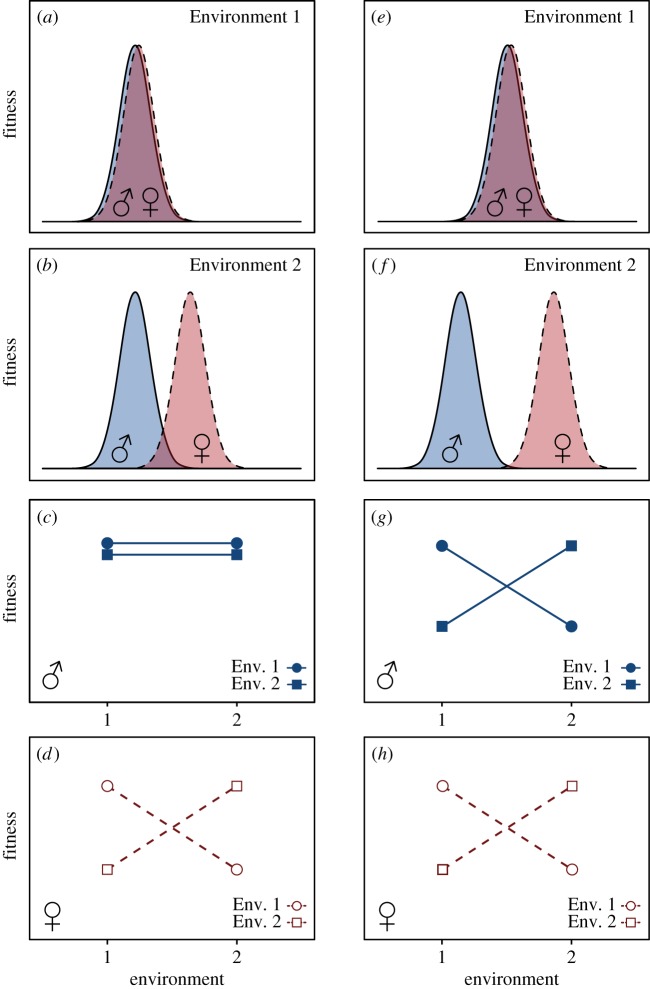Figure 1.
Relationship between the location of sex-specific local fitness optima in two different environments (‘Environment 1’ on first row and ‘Environment 2’ on second row) and expected outcomes from reciprocal transplant experiments. Male fitness functions are shown in solid lines, blue and filled symbols, whereas female fitness functions are shown in dashed lines, red and open symbols. Left column (a–d): The location of the male fitness optimum is similar in environments 1 and 2, whereas the female optima differ between the two environments (a,b). Consequently, a reciprocal transplant experiment reveals no evidence for local adaptation or a fitness trade-off for males (c), but evidence for local adaption and a strong fitness trade-off between environments in females (d). Right column (e–h): The locations of male and female fitness optima are similar in environment 1, where selection is concordant between the two sexes (e). By contrast, in environment 2, the location of male and female optima differ, leading to sexually antagonistic selection in that environment (f). As both male and female optima differ between environments 1 and 2 (e,f), reciprocal transplant experiments reveal local adaptation and fitness trade-offs between environments in both males and females (g,h).

